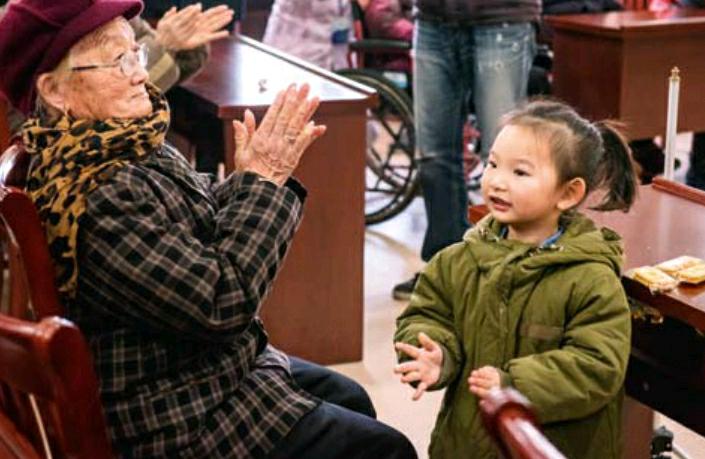A Glimpse at Elderly Care in China
by+Christophe+Trontin+and+Laurent+Hou
During a trip to Jiangsu Province, we had the opportunity to visit Taizhou Peoples Hospital Community Medical Center, which is a pioneering structure for elderly care, especially in a relatively small city of 1.6 million inhabitants (by Chinese standards). The glass doors and columns lining the entrance of the building made it look more like a hotel than a nursing home. Our first stop was the recreation room. The large room is divided into a few different sections, each dedicated to a specific activity. Residents were playing building games, cards, mah-jong and chess. Others were writing calligraphy or browsing the internet. As we moved past each group of people, some smiled, some waved, and others were so absorbed in their activities that they didnt even notice the large group of foreign visitors.
A nurse guided us to the second floor, which was mostly composed of large dormitories. The people in the dormitories were less active than the residents we met on the ground floor. They either sat quietly or laid in bed while nurses made rounds. We met a retired psychiatry professional named Li Ruqi who now volunteers at the community center. He visits twice a month to check the psychological health of resi- dents and do some consultation. For him, volunteering is a meaningful way to contribute to society. “We will all get old one day,” he declared. “I too will need help one day, but for the moment I can help residents who have psychological issues.” That day, Mr. Li met 71-year-old Chen Jiakang, who is recovering from a stroke. Mr. Chen had been living in the community center for a year when his daughter, who works as a primary school teacher, could no longer take care of his health needs.
The third floor featured double and individual rooms. Everything looked similar to a Western nursing home: doors wide enough for gurneys, TVs facing reclining beds, and restrooms designed for wheelchairs and medical care. In a large multipurpose room, senior musicians performed together: five erhu (two-stringed bowed instrument), one yangqin (a hammered dulcimer), two flutes, one matouqin (horsehead fiddle) and even an electric flute. They played traditional music everyone knows: nostalgic “Mo Li Hua” (Jasmine Flower) and then happier “Xi Yang Yang” (Jubilance). A few residents danced but most sat quietly and listened to the music. Voices trembled and melodies were imperfect, but they were full of heart, and their audience smiled. Amidst all the old people, we noticed a young girl, whose presence raised a question: How often do residents get visits from family? How do residents feel about living only with other seniors, except for a few doctors and nurses?
Chinese people traditionally take care of their parents as they age, so both the elderly and their children are often very reluctant to resort to a nursing home. But a massive aging population, decades of economic growth and social changes are making the situation evolve. The market for personal care services could reach 400 billion yuan in 2025, so companies and in- vestors are preparing to seize the economic opportunity. However, according to Bromme H. Cole, author of Enter the Ageing Dragon, the rules for the emerging market are still blurry and there are major imbalances: Chinese and foreign investors are fighting hard to provide high-end services to the richest elderly people while services for the middle-class and poorer people, especially in small cities and rural areas, have developed very slowly because they are not as attractive to investors.

